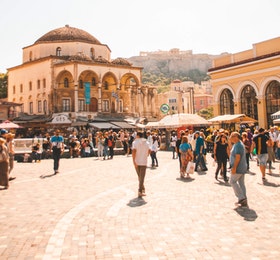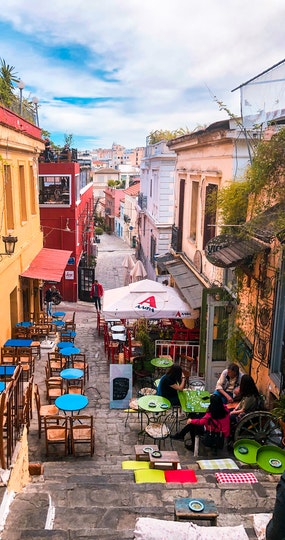Castle of Ioannina
The Castle of Ioannina is built on the western shore of Lake Pamvotida on a small rocky peninsula, on the two heights of which an equal number of citadels are formed
In 1082, Norman Bohemond, son of the Duke of Sicily Robert Guiscard, added one citadel to the ruins of the Byzantine fortification and dug a fortification trench. Ioannina flourished following the Fourth Crusade and the Fall of 1204, when many wealthy Byzantine families fled there in the early 13th century following the sack of Constantinople.
Pamvotida lake
Without this being a norm, the term Pamvotis (Pamvotida) often refers to the formal language of governmental papers, scientific literature, and school textbooks, and it appears to have been formed mostly after the country was freed in 1913. At the start of the 20th century, it first occurred in Greek literature. Two maritime battles—literally, sea battles—took place at Pamvotida, the first in 1379 and the second in 1389. Pamvotida's history is intimately entwined with that of the city, particularly the castle.
The Perama Cave
The Perama Cave in Ioannina, Greece, was the first cave to be used for tourism in the country, and it continues to hold that distinction due to its size and uniqueness. For the first time in Greece, fossilized teeth and bones of the cave bear (Ursus spelaeus) were discovered here (1956). There were still enormous creatures that are now extinct that found winter refuge there until 200,000 years ago, according to the bones and teeth of ancient cave bear species.
The Museum of Silversmithing
The western tower of the southeast acropolis of Ioannina Castle is where the Museum of Silversmithing is situated. Its goal is to preserve knowledge about Epigraphy silversmithing and spread information to the public about its technique from the 18th to the 20th century. The collection includes fine artifacts with intricate features including jewelry, weaponry, and tableware for the house and personal belongings.
Museum Ali Passa
The Museum of the Pre-Revolutionary Period was initially established in 1958 owing to the initiative of enlightened Gianniotes in the vicinity of the Monastery of Ag. Panteleimonos, which Ali Pasha had transformed into a country home. As Of may 2012, the Museum of Ali Pasha and the Revolutionary Period has indeed been situated in the same location. This museum features the impressive collection of Fotis Rapakousis.
Tradition
Βurning Ηolly
On the day of Christ's birth, children in Ioannina carry laurel and holly branches as they return to their parents' homes to wish them a good birthday. Since that time, all married children who visit their father's house to kiss their parents' hands must have a branch of holly or another tree that burns crackling in their hands as they go to wish someone a happy birthday or to say hello.
In order to guide themselves to the manger, they clutched a branch of a blazing holly.
Custom of Tzamala
The tradition has been practiced in Ioannina every year since the 1980s and dates back to the 19th century. With sand, they create a circle (3-6 meters in diameter) and place a large trunk in the center. They then surround the trunk with branches and logs in order to start a fire. On the final Sunday of Halloween, large fires are built, and men and women dressed as each other dance around them.
Custom of Dolias
In Paleopyrgos Pogoniou, the commandment custom (Doli or Dolia) is restored on August 15, the day of the Virgin Mary's Assumption. The dinner is served at midday in the church's courtyard, and the oldest person there (Doli Pasha) will raise a glass to a visitor. He'll drink three times, and after each one, he'll sing a song in honor of a different individual. On Doli Pasha's instruction, the remaining guests will sing songs in which they will devote their wishes to anybody they choose. The aim of the tradition is to promote cooperation and tranquility among local residents. The event begins in the evening with traditions and lasts through the night with a large feast.
Bandidos
The "Bandidos" tradition, which goes back to 1449 when Arta fell under Ottoman control and the sultan's agent in Thessaloniki granted the Artinas' desire to dress up on Halloween, will be restored on Friday, March 8 at 7 p.m. Folkloric accounts claim that the "Bandides" were the males of the era who would go out on Halloween dressed sloppily with their pants tied with a scarf and taunt everyone they saw.




